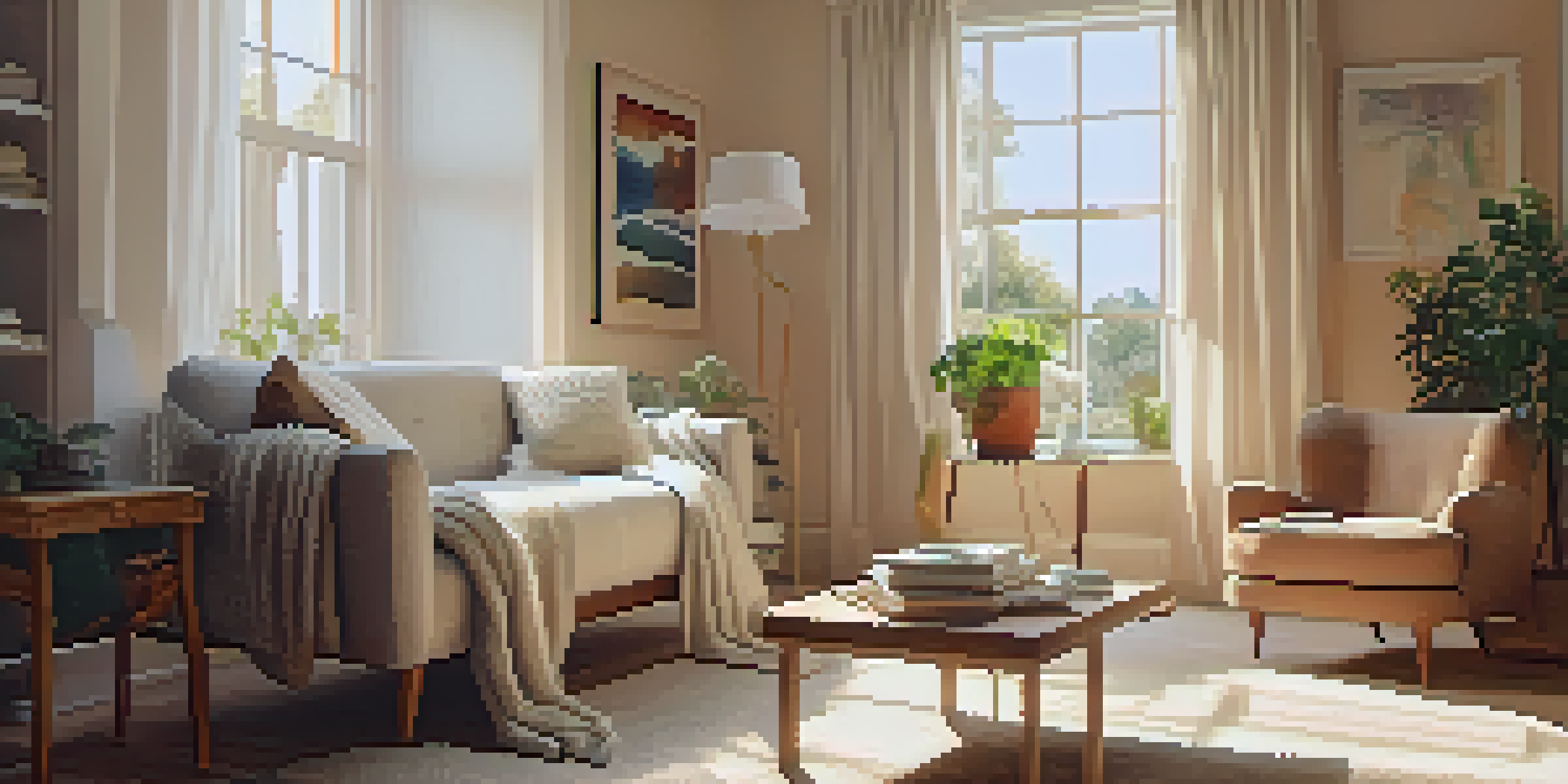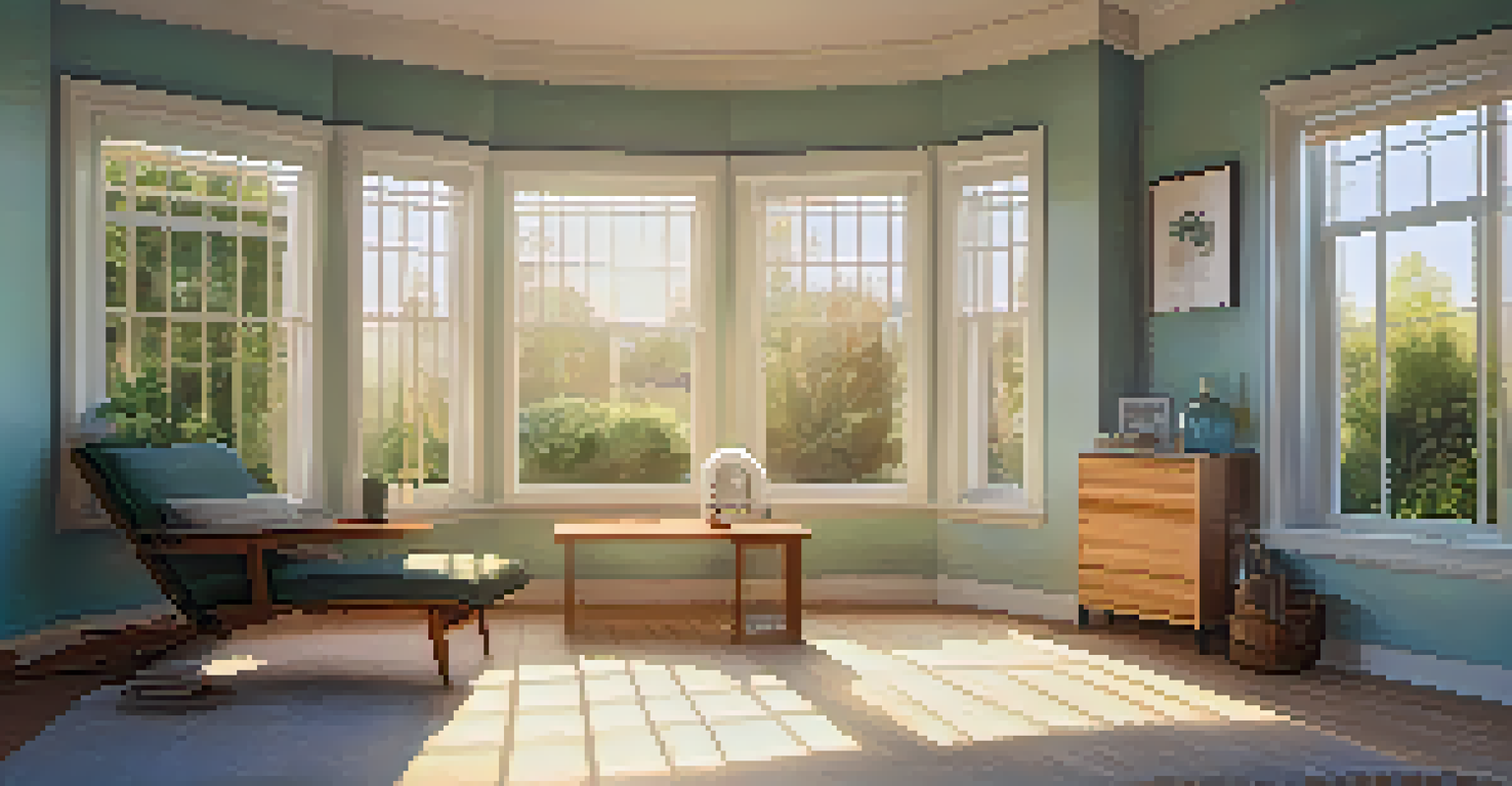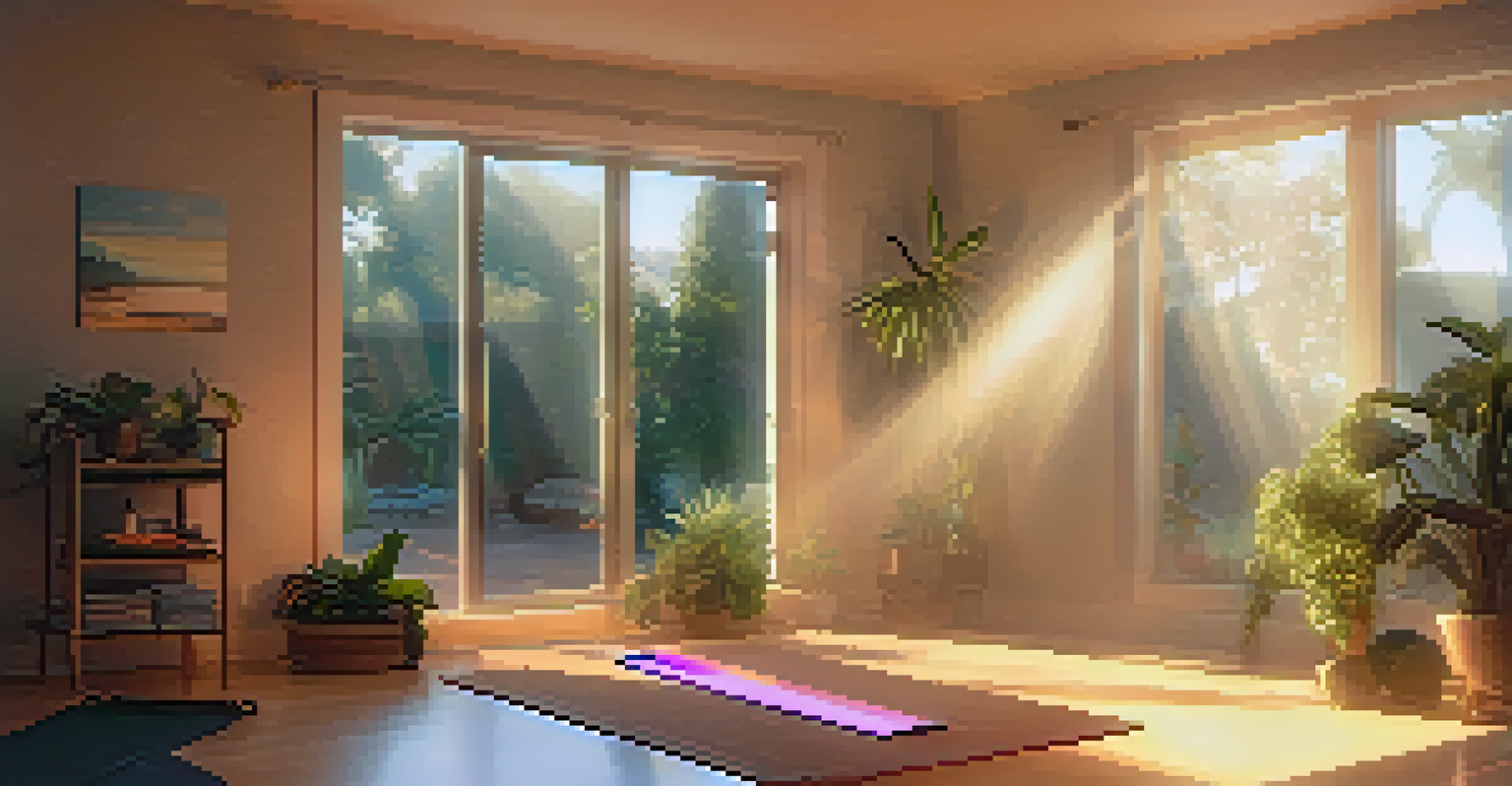The Role of Light Therapy in Treating Seasonal Affective Disorder

Understanding Seasonal Affective Disorder (SAD)
Seasonal Affective Disorder, commonly known as SAD, is a type of depression that occurs at certain times of the year, usually in the fall and winter months. Many people experience symptoms like fatigue, mood swings, and a lack of motivation. The reduced daylight during these seasons can disrupt our circadian rhythms and serotonin levels, leading to these feelings. Understanding SAD is the first step in finding effective treatments.
The sun is a daily reminder that we too can rise again from the darkness, that we too can shine our own light.
For those who suffer from SAD, the change in seasons can feel like a heavy weight pressing down. It's not just the cold weather; the lack of natural light plays a significant role in how we feel. This makes it crucial to explore ways to counteract these seasonal blues. Recognizing the signs of SAD can help individuals seek the right help and support.
By understanding the symptoms and triggers of SAD, we can better appreciate the role of various treatments, particularly light therapy. This approach offers a beacon of hope for many, helping to alleviate the emotional and physical toll that SAD can take. In the following sections, we'll delve deeper into how light therapy works and its benefits for those affected.
How Light Therapy Works to Combat SAD
Light therapy involves exposure to artificial light that mimics natural sunlight, offering a way to compensate for the lack of daylight during darker months. This therapy typically involves sitting near a light box that emits bright light, usually at an intensity of about 10,000 lux. The light helps to regulate melatonin and serotonin levels, which are crucial for maintaining our mood and sleep cycles.

When exposed to this bright light, the body's internal clock, or circadian rhythm, can be reset. This process can help alleviate feelings of sadness and lethargy associated with SAD. It's like giving your body a gentle nudge to wake up and take notice of the world around it, even when the days are short and dreary.
SAD Affects Mood in Winter
Seasonal Affective Disorder (SAD) can lead to feelings of fatigue, mood swings, and lack of motivation due to reduced daylight in fall and winter.
Moreover, light therapy is generally considered safe and non-invasive, making it an appealing option for many. As with any treatment, it's important to consult with a healthcare professional to determine the best approach for individual needs. Light therapy not only offers immediate relief but also promotes long-term strategies for managing SAD.
Benefits of Light Therapy for SAD Sufferers
One of the most significant benefits of light therapy is its ability to provide quick relief from SAD symptoms. Many individuals report improvements in mood, energy levels, and overall well-being within just a few days of starting treatment. This rapid response can be incredibly encouraging for those who have struggled through long winters.
In the depths of winter, I finally learned that within me there lay an invincible summer.
Additionally, light therapy is a drug-free alternative, which appeals to many who may be wary of medication side effects. This natural approach allows individuals to take control of their mental health without the need for prescriptions. It can also be easily integrated into daily routines, making it a convenient option.
Furthermore, studies suggest that light therapy can have lasting effects even after treatment has stopped. By incorporating light therapy into their lives, many SAD sufferers find they can manage their symptoms more effectively year after year. This ongoing benefit makes light therapy a worthwhile consideration for those affected by the seasonal changes.
Choosing the Right Light Therapy Device
When it comes to light therapy, not all devices are created equal. It's essential to choose a light box that emits the right intensity of light and filters out harmful UV rays. Look for a device that provides at least 10,000 lux, as this level has been shown to be effective for treating SAD.
Additionally, consider the size and design of the light box. Some people prefer larger models that can be used while sitting at a table, while others may opt for portable options. The key is to find a device that fits comfortably into your lifestyle and daily routine, ensuring consistent use for maximum benefit.
Light Therapy Alleviates Symptoms
Light therapy mimics natural sunlight and helps regulate mood by adjusting melatonin and serotonin levels, offering quick relief for SAD sufferers.
Lastly, it's wise to read reviews and consult with healthcare professionals before making a purchase. By investing in a quality light therapy device, individuals can enhance their chances of successfully managing their SAD symptoms and enjoying brighter days ahead.
Integrating Light Therapy into Daily Life
Incorporating light therapy into your daily routine can be straightforward and enjoyable. Many users find it beneficial to schedule their light sessions during the morning hours, as this aligns with the body's natural wake-up signals. A consistent routine can help maximize the positive effects of the therapy.
Additionally, consider pairing light therapy with other healthy habits, such as regular exercise and a balanced diet. Exercise, in particular, can boost mood and energy levels, making it a perfect complement to light therapy. Think of it as a team effort for your mental health—every little bit helps!
Finally, remember that patience is key. While some individuals may see immediate improvements, others might need a few weeks to experience the full benefits. By committing to this practice and remaining open to its potential, you can create a brighter path through the darker seasons of life.
Potential Side Effects and Precautions
While light therapy is generally safe, it's important to be aware of potential side effects. Some users may experience mild discomfort, such as headaches, eye strain, or irritability when first starting treatment. These symptoms often diminish with continued use, but it's essential to listen to your body and make adjustments as needed.
Additionally, individuals with certain conditions, such as bipolar disorder, should consult a healthcare professional before starting light therapy. The bright light may trigger manic episodes in some cases, so it's crucial to approach treatment with caution and awareness. Your mental health provider can help determine the best course of action.
Choosing the Right Device Matters
Selecting a light therapy box that emits at least 10,000 lux and fits your lifestyle is crucial for effectively managing SAD symptoms.
Ultimately, being informed about the potential side effects and taking necessary precautions can help ensure a positive experience with light therapy. By understanding your body and its responses, you can navigate this treatment effectively and make the most out of your journey toward improved mental health.
Conclusion: A Bright Future with Light Therapy
Light therapy offers a promising solution for those struggling with Seasonal Affective Disorder. By mimicking natural sunlight, this treatment can help lift spirits and restore energy during the darker months. As we've explored, the benefits of light therapy extend beyond just immediate mood enhancement; it can also empower individuals to take charge of their mental health.
As the seasons change, having effective tools like light therapy can make a significant difference. With its ease of use and non-invasive nature, many find it to be a vital part of their self-care routine. It's about finding what works for you and embracing the journey toward brighter days.

In conclusion, if you or someone you know is affected by SAD, consider exploring light therapy as a viable option. With a little research and commitment, you can illuminate the path to a happier, healthier winter season.